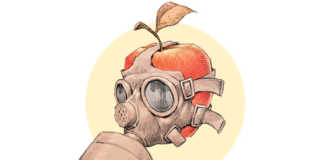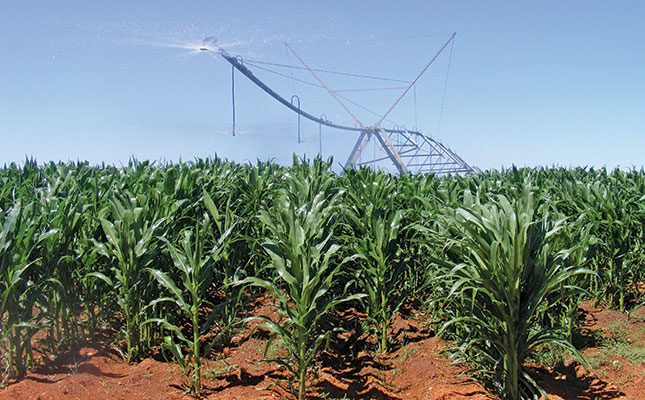Until the 1990s drought aid was a well-established part of government’s disaster management policy. Since then drought aid has been bogged down by a shortage of funds, administrative chaos, unsympathetic attitudes towards commercial farmers, and now a dispute over satellite maps used to pinpoint drought-stricken farms.
‘Assessment from outer space’
Remote sensing has been used by other countries to assess agricultural conditions for a long time, but it has been met with dissatisfaction in South Africa. Particularly in the Northern Cape and Eastern Province, incensed farmers say the satellite images aren’t accurate enough in districts with a variety of plants, veld and soil types.
While they agree the maps give a general idea of the extent of the drought, they insist much research is needed to improve the system and that the images must be used in conjunction with veld inspection at ground level. However, the department doesn’t have the qualified manpower for this and district soil conservation committees no longer exist.
Even departmental scientists agree that the veld assessment from outer space is flawed. But they suggest that it’s the only way to treat commercial and communal land equally with limited funds. Last year the western region of the Eastern Cape applied for R100 million in drought relief but got only R20 million for extensive livestock farmers. Spread among a 1 000 applicants, that gives each a mere R20 000, just enough to buy 150 bags of feed (emerging farmers would get considerably less.)
This amount is inadequate and can do little to relieve a farmer’s situation, especially considering that farmers have to pay for the first third of the purchasing cost of the feed anyway. Still, hard-pressed farmers are only too thankful to receive anything.
Arguing about the pros and cons of the maps clouds the real issues – farmers are finding it increasingly difficult to survive droughts; severe droughts can permanently damage grazing, particularly in arid areas; and climate change could worsen the situation sooner than we think. Drought certainly won’t disappear, so the state must expect rising pressure to allocate more money for this disaster aid.
Times change
Clearly, drought aid needs new thinking to fit changed circumstances. While it’s always been used by politicians to get votes, it must now be used to ensure food security by helping farmers preserve natural resources and support the rural economy. Having farmers fighting and pleading for a few bags of maize every two or three years is not going to achieve that. The state can encourage farmers to plant drought-resistant fodder crops and, with accurate long-term weather forecasts, help them plan more effectively. But confidence in our weather service is still lacking.
A new government scheme
It can be argued that it’s every farmer’s responsibility to get themselves through a drought without taxpayers’ assistance, by maintaining a conservative stocking rate in line with the local ecological potential. With the best will in the world, not a lot of farmers can do this and keep up with the cost-price squeeze.
To keep farmers on the land, the state must help in extraordinary circumstances like drought.Farmers who participated in the generous, but effective stock reduction scheme which first ran from 1969 to 1978, say it was ideal for the time.There was a national drought and rock-bottom meat and fibre prices.
Some academics later claimed there was no proof the scheme improved veld condition, but nearly 5 000 farmers, with a combined 20 million hectares and 3,4 million small-stock units, participated. They were compensated for reducing their flocks by a third and resting a third of their farms every year.
Many contend that without this scheme their stock would have grazed the veld to the ground. At the very least, it proved overstocking doesn’t pay. The livestock sector urgently needs a new scheme, designed to adequately address current problems and to take us through the next few decades













